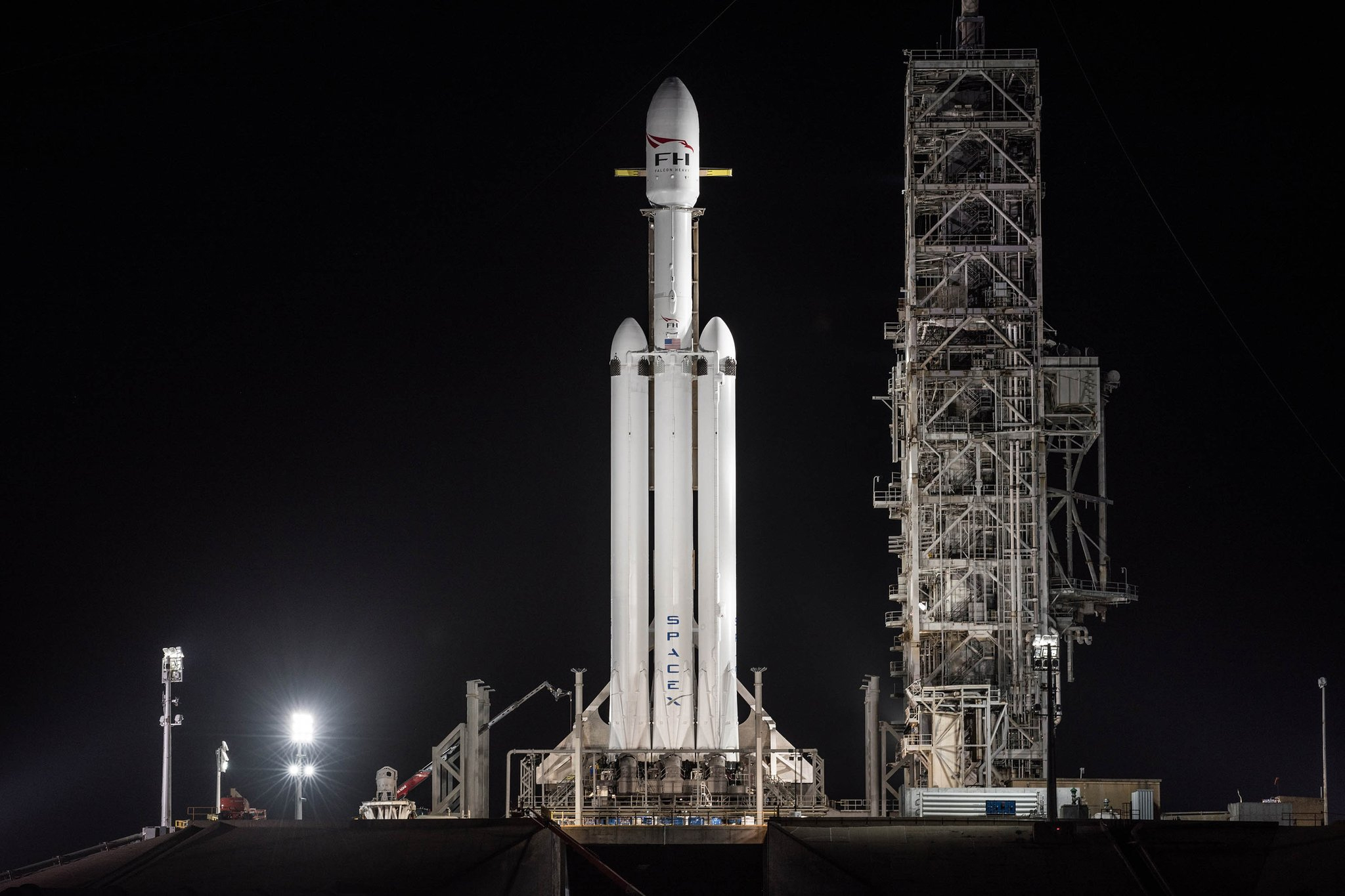SpaceX's Falcon Heavy Megarocket Gets 1st Test Launch Today: Watch It Live
The launch window stretches from 1:30 to 4 p.m. EDT (1830 to 2100 GMT). You can watch the launch live here on Space.com, courtesy of SpaceX, beginning at 1:10 p.m. EST (1810 GMT). Weather conditions are currently at 80 percent "go" for today, and 70 percent for a backup launch time tomorrow, according to the 45th Space Wing's Weather Squadron, which monitors weather for air and space operations at Cape Canaveral Air Force Station and Kennedy Space Center.
SpaceX's current Falcon 9 rocket launches cargo to the International Space Station and lofts satellites into orbit. The rocket's first stages often land to be reused in future launches. The Falcon Heavy is an extreme version of this setup, built to lift more and go further: What is essentially three Falcon 9 first stages boost the rocket into space, and SpaceX will attempt to land all three of them. Two will set down on land, while the center stage, which will travel further, will land on a floating barge. [In Photos: SpaceX's 1st Falcon Heavy Rocket Test Launch]
"What I find strange about this flight is that normally I feel super stressed out the day before; this time I don't," SpaceX CEO Elon Musk said in a news teleconference yesterday (Feb. 5). "That may be a bad sign. I'm not sure. I feel quite giddy and happy, actually — I'm really hopeful for this flight going as planned."

The rocket stands 230 feet (70 meters) tall and will be the world's most powerful operational rocket, able to lift payloads of up to 119,000 lbs. (57 metric tons) into orbit. For this launch, though, the Falcon Heavy will have a smaller, stranger payload: Musk's car, a red Tesla Roadster. (Musk is also CEO of the electric car company Tesla.) The car is set to end up in an orbit around the sun that's far enough out to reach Mars, had the mission launched at the right time, and Musk said it will carry cameras that should provide "some epic views," if all goes well. [How SpaceX's Falcon Heavy Rocket Works (Infographic)]
Musk has emphasized that this is a high-risk launch, setting expectations low for a successful maiden flight. The vehicle's 27 first-stage engines will all need to light at the right time, for instance, and the central first-stage will undergo a lot of stress during the launch. After Musk made that comment, the Falcon Heavy underwent a successful engine test-fire, in which all the first-stage engines ignited for about 10 seconds on the launch pad.
"It'd be a real huge downer if it blows up," Musk said during the teleconference. "If something goes wrong, hopefully it goes wrong far into the mission, so we at least learn as much as possible along the way … I would consider it a win if it just clears the pad and doesn't blow the pad to smithereens." Musk said that rebuilding the pad could take 8 to 12 months, which would be the limiting factor for when they could try another launch if this one went poorly; SpaceX can build another Falcon Heavy to test in 3 or 4 months.
The Falcon Heavy will lift off from the same launch pad used by most of the Apollo moon missions, and it will have the most lift capacity of any U.S. spacecraft since Apollo's Saturn V. If successful, the Falcon Heavy will pave the way for SpaceX transport beyond a close Earth orbit — to the moon and onward to Mars.
Sign up for the Live Science daily newsletter now
Get the world’s most fascinating discoveries delivered straight to your inbox.
"We will have a good time no matter what happens," Musk said. "It should be exciting, one way or another — it's either going to be an exciting success or an exciting failure."
Either way, he added, "It's going to be one big boom."
Visit Space.com for complete coverage of SpaceX's Falcon Heavy today.
Email Sarah Lewin at slewin@space.com or follow her @SarahExplains. Follow us @Spacedotcom, Facebook and Google+. Original article on Space.com.











